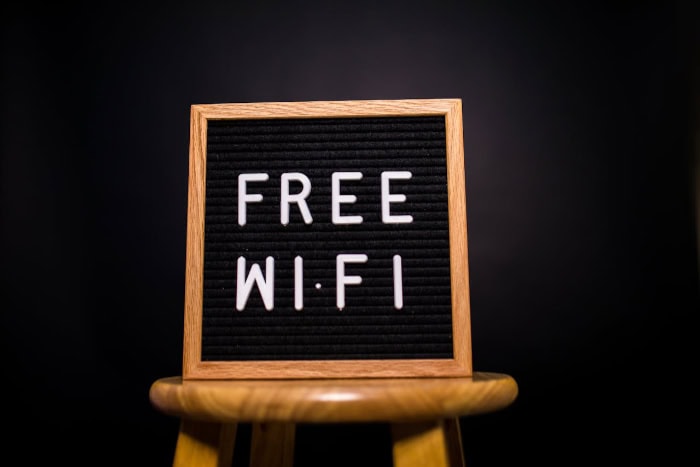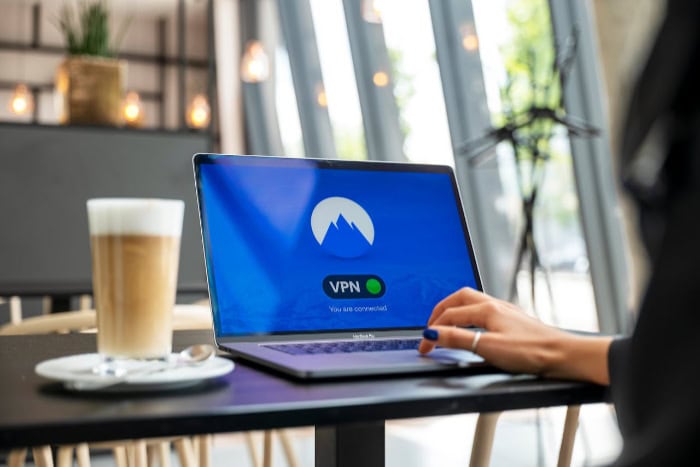Are Public Wi-Fi Networks Safe? Risks You Need to Know

Access to free Wi-Fi in public spaces feels like a modern-day luxury, but this convenience often comes with hidden risks. Many users connect without a second thought, unaware of the potential vulnerabilities lurking in these seemingly harmless networks.
Hackers can exploit unsecured connections to intercept private data, steal passwords, or even infiltrate devices. From cozy coffee shops to bustling airports, public Wi-Fi can quickly turn into a cyber minefield if proper precautions aren’t taken.
Understanding Public Wi-Fi Networks
Public Wi-Fi networks have become a convenient way for people to stay connected while in public spaces. These networks allow easy access to the internet for browsing, working, or simply staying in touch.
However, not all public Wi-Fi networks are created equal, and the way they operate can impact both their functionality and the level of security they provide. It’s helpful to recognize the different types of public networks and the common places where they are available.
Types of Public Networks
Public Wi-Fi networks can vary dramatically in terms of accessibility and security features. Open networks are perhaps the most familiar.
These are the ones you can join without providing a password or signing in through any system. While convenient, they are often less secure because anyone within range can connect, making it easier for hackers to exploit vulnerabilities.
Password-protected networks, on the other hand, require users to enter a password to gain access. These are slightly safer, as they limit who can connect.
However, if the password is openly shared or widely accessible—such as written on a café menu or front desk sign—the risk of unauthorized users joining still exists.
Captive portal systems, commonly found in commercial spaces like hotels or airports, require users to authenticate their connection by signing in on a browser page. While this adds some level of control over user access, the connection itself may not always be encrypted.
Provider-authenticated networks add another layer of security by restricting access to users who have pre-registered or have an account with the service provider. These are often found in membership-based areas or certain businesses.
They offer more secure access but may still be vulnerable if users are lax with their login credentials.
Understanding these distinctions can help you assess how much risk may be associated with a network before connecting.
Common Locations
Public Wi-Fi hotspots can be found in many different environments, each serving as a convenient option for users on the go. Coffee shops and restaurants are some of the most popular spots, where people often check emails, scroll through social media, or catch up on work while enjoying their meals or drinks.
These settings usually prioritize accessibility, but security is not always a focus.
Hotels and airports are also major hubs for public Wi-Fi usage. Travelers rely on these networks to coordinate trips, book services, or communicate with friends and family.
While many of these venues use captive portals or offer password-protected networks, the sheer number of users can make them prime targets for cybercriminals.
Other common locations include public spaces such as libraries, parks, and transportation hubs. Libraries, for instance, often provide free Wi-Fi to support education and research, but their open nature may leave connections less secure.
Parks and similar areas typically offer completely open networks for convenience, but these are often unsecured and leave users vulnerable to potential attacks.
Wherever you encounter public Wi-Fi, it’s essential to pause and consider the possible risks before connecting blindly.
Security Threats and Vulnerabilities

While public Wi-Fi networks are undeniably convenient, they can also serve as gateways for cybercriminals to exploit unsuspecting users. These networks often lack robust security measures, making them a breeding ground for various types of cyberattacks and data breaches.
To protect yourself, it’s important to recognize the potential dangers lurking on these connections.
Network Attacks
Cybercriminals often target public Wi-Fi networks to conduct specific types of attacks that exploit vulnerabilities in the connection. One of the most common is the man-in-the-middle attack.
In this type of breach, an attacker intercepts communication between your device and the Wi-Fi network, gaining access to everything you send or receive. This could include emails, passwords, or even credit card details, all without your knowledge.
Another concerning threat is the presence of evil twin networks. These are rogue hotspots set up by hackers to mimic legitimate public Wi-Fi connections.
For example, in a coffee shop, an attacker might create a fake network with a similar name to the real one. When unsuspecting users connect to the fake network, the hacker gains full visibility into their online activities.
Packet sniffing is yet another risk associated with public Wi-Fi. This technique involves capturing and analyzing data packets as they travel across the network.
If your data isn’t adequately encrypted, attackers can easily access sensitive information like login credentials and private messages.
Public Wi-Fi networks are often vulnerable to these types of attacks due to their open nature, making it crucial to be cautious when connecting to them.
Data Vulnerabilities
The risks don’t end with network-based attacks. Public Wi-Fi also exposes users to a range of data-related vulnerabilities that can compromise their privacy and security.
One major issue is the exposure of unencrypted information. When data isn’t encrypted, it can be intercepted by attackers during transmission, leaving sensitive details such as personal messages, login credentials, and financial information completely unprotected.
Password and credential theft is another widespread concern. Hackers can exploit weak security on public networks to intercept usernames, passwords, and other login details.
Once they have this information, attackers could potentially gain unauthorized access to your email, bank accounts, or social media platforms.
Additionally, public Wi-Fi can serve as a channel for malware distribution. Attackers may inject malicious software into a network, enabling them to infect connected devices with viruses, ransomware, or spyware.
These infections can lead to stolen data, damaged devices, and even the loss of personal files.
When connecting to public Wi-Fi, it’s important to remember that data traveling over these networks is often not as secure as it seems. The risks of unencrypted transmissions, stolen credentials, and malicious software highlight why protective measures are essential.
Essential Protection Measures

Using public Wi-Fi can sometimes feel like walking on thin ice when it comes to security. However, there are reliable ways to shield yourself from the risks associated with these networks.
Combining practical technical tools with smart device management can significantly reduce your exposure to threats. Taking proactive steps can ensure your connection is safer, even when using public Wi-Fi for tasks like browsing, email, or online transactions.
Technical Safeguards
One of the most effective ways to protect your data on public Wi-Fi is by using a Virtual Private Network (VPN). A VPN establishes a secure, encrypted connection between your device and a remote server, ensuring that your data remains private, even if the network itself is compromised.
This encryption makes it virtually impossible for hackers to interpret the information you transmit, turning public Wi-Fi into a safer space for online activity.
Another simple but highly effective safeguard is to look for HTTPS in the URLs of websites you visit. HTTPS indicates that the website is using encryption to protect the data being exchanged between your browser and the website.
This is especially important for tasks like online shopping or entering sensitive information, as any site lacking HTTPS can expose your personal data to prying eyes.
Configuring your device’s firewall is another step you can take to improve security. A properly configured firewall acts as a barrier between your device and unauthorized access attempts.
While it won’t completely stop all threats, it acts as a valuable first line of defense by blocking suspicious activity and restricting unsafe connections.
By combining these technical measures, you can make yourself a much harder target for hackers seeking to exploit the vulnerabilities of public Wi-Fi.
Device Settings
Adjusting your device’s settings is just as important as implementing technical safeguards when it comes to staying secure on public networks. One of the first changes to make is disabling auto-connect settings.
Many devices are programmed to automatically connect to available Wi-Fi networks, which could result in unknowingly joining an unsafe network. By turning off this feature, you can manually choose which networks to trust and avoid connecting to malicious or fake hotspots.
Another smart move is to tweak your network sharing settings. Public Wi-Fi networks are often shared with large numbers of people, making it essential to limit how much information your device reveals.
Disabling network sharing ensures that your device doesn’t automatically expose its presence to others on the same network, reducing the risk of unauthorized access.
Lastly, file sharing controls should be carefully managed. Leaving file sharing enabled can allow attackers on the same network to access your shared files or even plant malicious software.
It’s always a good idea to turn off file sharing when connected to public Wi-Fi, especially if you’re not actively using this feature.
These small but meaningful adjustments to your device’s settings, paired with technical tools like VPNs and firewalls, offer a strong foundation for safer public Wi-Fi use. Taking these steps not only helps protect your personal data but also ensures you can browse with greater peace of mind.
Safe Usage Guidelines

Staying secure on public Wi-Fi requires more than just relying on strong technical safeguards; adopting mindful habits and practices while browsing can significantly lower your exposure to cyber threats.
From carefully selecting the right network to managing your device’s settings, these guidelines provide practical ways to protect yourself in real-time. Being aware of your online behavior and keeping your device in optimal condition can make a meaningful difference in how safe your data remains.
Recommended Practices
Before connecting to a public Wi-Fi network, it’s always worth taking a moment to verify its legitimacy. Check with venue staff to confirm the network name and avoid connecting to similar-looking networks, which might be malicious copies set up by attackers.
This small step can save you from falling into a trap such as an evil twin network.
Once connected, it’s important to choose your online activities wisely. Avoid sensitive tasks such as banking, shopping, or anything requiring you to input personal details.
Stick to general browsing or non-critical tasks when using public Wi-Fi. If you absolutely need to perform something sensitive, ensure you’re using additional protection like a VPN.
Be mindful of the timing of your connection as well. You don’t necessarily need to remain connected to a public network the entire time you’re in the location.
Disconnect from the network when you’re not actively using it to limit exposure to any potential threats. Treat public Wi-Fi as a temporary convenience, not something to rely on for prolonged periods of time.
Combining these practical habits with technical tools can help create a safer online experience while using public Wi-Fi.
Device Management
Alongside mindful browsing behavior, the condition of your device plays a major role in online security. Keeping your operating system up to date is one of the simplest yet most effective steps you can take.
Updates often include security patches that fix vulnerabilities, making it harder for attackers to exploit your device. By regularly updating your system, you reduce your exposure to known threats.
In addition to system updates, maintaining robust security software is essential. Antivirus programs, malware detectors, and firewalls act as an additional layer of defense, scanning for suspicious activity and blocking malicious content before it can harm your device.
Ensure that your security software is active and updated frequently to remain effective.
Managing app permissions is another step that’s often overlooked but equally critical. Limit the permissions you grant to apps, especially those you don’t use frequently or those asking for unnecessary access to sensitive features like your location, camera, or files.
Keeping app permissions under control minimizes potential risks in case a malicious app tries to exploit your device.
Alternative Solutions

One of the easiest ways to bypass the risks of public Wi-Fi is by using a mobile hotspot. Most smartphones have a built-in feature that allows you to share your cellular data connection with other devices.
Since only you control access to your hotspot, it provides a far more secure way to connect to the internet. Make sure to use a strong password for your hotspot to prevent unauthorized connections.
Another option is to depend on cellular data instead of public Wi-Fi. Cellular networks are encrypted and much harder for attackers to breach compared to open or shared Wi-Fi networks.
Whether you’re sending emails, browsing, or streaming, using cellular data provides a secure alternative for completing sensitive tasks without the risks tied to public networks.
For situations where staying offline is possible, offline work methods are a practical solution. Many apps and services allow you to save files and emails for offline access, letting you complete tasks without requiring a connection.
Planning ahead and syncing the tools you need before leaving a secure network can keep you productive without exposing your data to unnecessary risks.
Conclusion
Public Wi-Fi offers unmatched convenience, allowing people to stay connected in various locations, from coffee shops to airports. However, that convenience often comes with significant security risks.
Cyber threats like network attacks and data vulnerabilities can turn a simple connection into a potential hazard. Fortunately, combining technical tools such as VPNs and HTTPS verification with smart device settings like disabling auto-connect and file sharing can create a solid foundation for safer browsing.
For those who seek an even higher level of security, alternative solutions such as mobile hotspots or cellular data provide viable options. In unavoidable situations where public Wi-Fi must be used, taking careful precautions, like limiting sensitive activities and adopting minimal-risk strategies, can help reduce exposure to threats.
Balancing convenience with safety doesn’t have to be complicated. A few thoughtful precautions can empower users to enjoy the benefits of public Wi-Fi without putting their personal information at unnecessary risk.
Staying vigilant and proactive will ensure a more secure experience, no matter where you connect.


